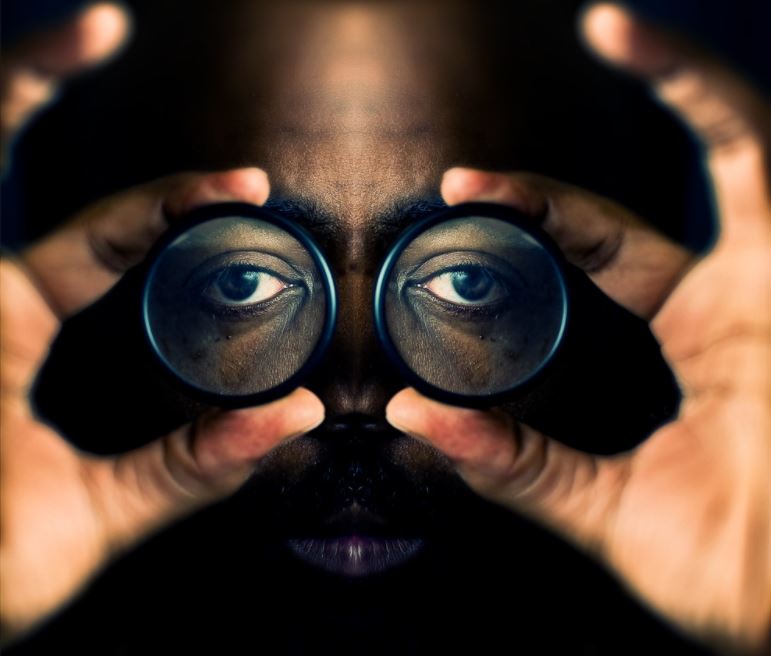Archive for April, 2021
How To See What’s Missing
 With one eye open and the other closed, you have no depth perception. With two eyes open, you see in three dimensions. This ability to see in three dimensions is possible because each eye sees from a unique perspective. The brain knits together the two unique perspectives so you can see the world as it is. Or, as your brain thinks it is, at least.
With one eye open and the other closed, you have no depth perception. With two eyes open, you see in three dimensions. This ability to see in three dimensions is possible because each eye sees from a unique perspective. The brain knits together the two unique perspectives so you can see the world as it is. Or, as your brain thinks it is, at least.
And the same can be said for an organization. When everyone sees things from a single perspective, the organization has no depth perception. But with at least two perspectives, the organization can better see things as they are. The problem is we’re not taught to see from unique perspectives.
With most presentations, the material is delivered from a single perspective with the intention of helping everyone see from that singular perspective. Because there’s no depth to the presentation, it looks the same whether you look at it with one eye or two. But with some training, you can learn how to see depth even when it has purposely been scraped away.
And it’s the same with reports, proposals, and plans. They are usually written from a single perspective with the objective of helping everyone reach a single conclusion. But with some practice, you can learn to see what’s missing to better see things as they are.
When you see what’s missing, you see things in stereo vision.
Here are some tips to help you see what’s missing. Try them out next time you watch a presentation or read a report, proposal, or plan.
When you see a WHAT, look for the missing WHY on the top and HOW on the bottom. Often, at least one slice of bread is missing from the why-what-how sandwich.
When you see a HOW, look for the missing WHO and WHEN. Usually, the bread or meat is missing from the how-who-when sandwich.
Here’s a rule to live by: Without finishing there can be no starting.
When you see a long list of new projects, tasks, or initiatives that will start next year, look for the missing list of activities that would have to stop in order for the new ones to start.
When you see lots of starting, you’ll see a lot of missing finishing.
When you see a proposal to demonstrate something for the first time or an initial pilot, look for the missing resources for the “then what” work. After the prototype is successful, then what? After the pilot is successful, then what? Look for the missing “then what” resources needed to scale the work. It won’t be there.
When you see a plan that requires new capabilities, look for the missing training plan that must be completed before the new work can be done well. And look for the missing budget that won’t be used to pay for the training plan that won’t happen.
When you see an increased output from a system, look for the missing investment needed to make it happen, the missing lead time to get approval for the missing investment, and the missing lead time to put things in place in time to achieve the increased output that won’t be realized.
When you see a completion date, look for the missing breakdown of the work content that wasn’t used to arbitrarily set the completion date that won’t be met.
When you see a cost reduction goal, look for the missing resources that won’t be freed up from other projects to do the cost reduction work that won’t get done.
It’s difficult to see what’s missing. I hope you find these tips helpful.
“missing pieces” by LeaESQUE is licensed under CC BY-ND 2.0
Regardless of the problem, the solution lives inside you.
 If you want things to be different than they are, you have a problem. And if you want things to stay the same, you also have a problem. Either way, you have a problem. You can complain, you can do something about it, or you can accept things as they are.
If you want things to be different than they are, you have a problem. And if you want things to stay the same, you also have a problem. Either way, you have a problem. You can complain, you can do something about it, or you can accept things as they are.
Complaining can be fun for a while, then it turns sour. Doing something about it can take a lot of time and energy, and it’s difficult to know what to do. Accepting things as they are can be a challenge because that means it’s time to change your perspective. But it’s your choice. So, what do you choose?
What does it look like to accept things as they are AND do something about it?
If you want someone to be different than they are, you have a problem. And if you want them to stay the same, you have a different problem. Either way, you have a problem. You can complain about them, you can do something about it, or you can accept them as they are.
Complaining about people can be fun, but only in small doses. Doing something about it, well, that’s difficult because people will do what they want to do, not what you want them to do. Accepting people as they are is difficult because it means you have to look inside and change yourself. But it’s your choice. So, what do you choose?
What does it look like to accept people as they are AND to do something that makes things better for all?
If you have a problem with things changing, the solution lives inside you. Things change. That’s what they do. And if you have a problem with things staying the same, the solution lives inside you. Things stay the same. That’s what they do. Either way, the solution lives inside you, and it’s time to look inside.
How would it feel to own your problem and look inside for the solution?
If you have a problem because you want people to be different, the solution lives inside you. People behave the way they want to behave, not the way you want them to behave. And if you have a problem because you want people to stay the same, the solution lives inside you. People change. That’s what they do. Either way, the problem is you, and it’s time to look inside for the solution.
How would it feel to accept people as they are and look inside to solve your problem?
Certainty or novelty – it’s your choice.
 When you follow the best practice, by definition your work is not new. New work is never done the same way twice. That’s why it’s called new.
When you follow the best practice, by definition your work is not new. New work is never done the same way twice. That’s why it’s called new.
Best practices are for old work. Usually, it’s work that was successful last time. But just as you can never step into the same stream twice, when you repeat a successful recipe it’s not the same recipe. Almost everything is different from last time. The economy is different, the competitors are different, the customers are in a different phase of their lives, the political climate is different, interest rates are different, laws are different, tariffs are different, the technology is different, and the people doing the work are different. Just because work was successful last time doesn’t mean that the old work done in a new context will be successful next time. The most important property of old work is the certainty that it will run out of gas.
When someone asks you to follow the best practice, they prioritize certainty over novelty. And because the context is different, that certainty is misplaced.
We have a funny relationship with certainty. At every turn, we try to increase certainty by doing what we did last time. But the only thing certain with that strategy is that it will run out of gas. Yet, frantically waving the flag of certainty, we continue to double down on what we did last time. When we demand certainty, we demand old work. As a company, you can have too much “certainty.”
When you flog the teams because they have too much uncertainty, you flog out all the novelty.
What if you start the design review with the question “What’s novel about this project?” And when the team says there’s nothing novel, what if you say “Well, go back to the drawing board and come back with some novelty.”? If you seek out novelty instead of squelching it, you’ll get more novelty. That’s a rule, though not limited to novelty.
A bias toward best practices is a bias toward old work. And the belief underpinning those biases is the belief that the Universe is static. And the one thing the Universe doesn’t like to be called is static. The Universe prides itself on its dynamic character and unpredictable nature. And the Universe isn’t above using karma to punish those who call it names.
“Stonecold certainty” by philwirks is licensed under CC BY-ND 2.0
When your company looks in the mirror, what does it see?
 There are many types of companies, and it can be difficult to categorize them. And even within the company itself, there is disagreement about the company’s character. And one of the main sources of disagreement is born from our desire to classify our company as the type we want it to be rather than as the type that it is.
There are many types of companies, and it can be difficult to categorize them. And even within the company itself, there is disagreement about the company’s character. And one of the main sources of disagreement is born from our desire to classify our company as the type we want it to be rather than as the type that it is.
Here’s a process that may bring consensus to your company.
For all the people on the payroll, assign a job type and tally them up for the various types. If most of your people work in finance, you work for a finance company. If most work in manufacturing, you work for a manufacturing company. The same goes for sales, engineering, customer service, consulting. Write your answer here __________.
For all the company’s profits, assign a type and roll up the totals. If most of the profit is generated through the sale of services, you work for a service company. If most of the profit is generated by the sale of software, you work for a software company. If hardware generates profits, you work for a hardware company. If licensing of technology generates profits, you work at a technology company. Which one fits your company best? Write your answer here _________.
For all the people on the payroll, decide if they work to extend and defend the core offerings (the things that you sell today) or create new offerings in new markets that are sold to new customers. If most of the people work on the core offerings, you work for a low-growth company. If most of the people work to create new offerings (non-core), you work for a high-growth company. Which fits you best – extend and defined the core / low-growth or new offerings / high growth? Write your answer here __________ / ___________.
Now, circle your answers below.
We are a (finance, manufacturing, sales, engineering, customer service, consulting) company that generates most of its profits through the sale of (services, hardware, software, technology). And because most of our people work to (extend and defend the core, create new offerings), we are a (low, high) growth company.
To learn what type of company you work for, read the sentences out loud.
“Grace – Mirror” by phil41dean is licensed under CC BY 2.0
 Mike Shipulski
Mike Shipulski